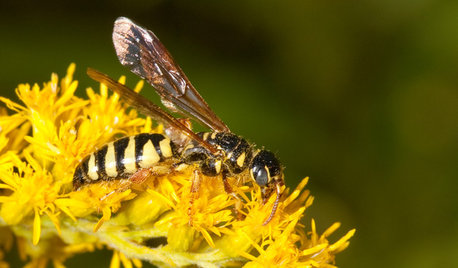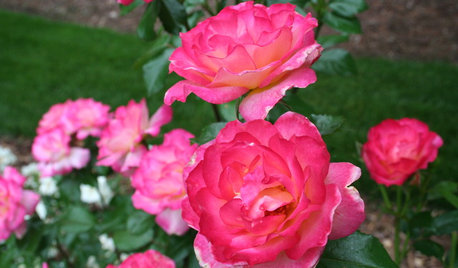Are red milkweed beetles harmful to milkweed
perennialfan273
13 years ago
Related Stories

GARDENING GUIDESGreat Design Plant: Butterfly Milkweed, a Beacon in the Prairie
Vivacious orange flowers for you, nectar for the butterflies and bees. Asclepias tuberosa is worth planting for more reasons than one
Full Story
GARDENING GUIDESGreat Design Plant: Milkweed
Quit cringing. This not-weed plant is a sight to behold in the garden, has a delicious vanilla scent and is a magnet for butterflies
Full Story
GARDENING GUIDESGreat Design Plant: Asclepias Incarnata for a Butterfly Garden
Beautiful swamp milkweed makes it easy to help monarchs and other pollinators in eastern U.S. gardens
Full Story
GARDENING GUIDESAttract Thynnid Wasps With Summer-Flowering Native Plants
These beneficial insects will hunt damaging beetle grubs in your lawn
Full Story
GARDENING GUIDESSoutheast Gardener: What to Do in June
Get your snippers out to protect your roses from beetles and harvest lavender from the landscape. It's a glorious month for Southern gardens
Full Story
EDIBLE GARDENSSummer Crop: How to Grow Blueberries
Plant blueberries in spring or fall for garden beauty through three seasons — and a sweet superfood in summer
Full Story
GARDENING GUIDES6 Plants That Beat Butterfly Bush for the Wildlife Draw
It's invasive, a nonnative and a poor insect magnet. Check out these better alternatives to butterfly bush in the garden
Full Story
GARDENING AND LANDSCAPINGBe a Citizen Scientist to Help Wildlife, Learn and Have Fun Too
Track butterflies, study birds, capture stars ... when you aid monitoring efforts, you’re lending Mother Nature a hand
Full Story
GARDENING FOR BUTTERFLIESBe a Butterfly Savior — Garden for the Monarchs
Keep hope, beauty and kindness alive in the landscape by providing a refuge for these threatened enchanters
Full Story
GARDENING GUIDESOrganic Matters: Thwart Insect Pests With Trap Crops
Add a few sacrificial plants to your garden to lure insects away from the harvest
Full Story






ken_adrian Adrian MI cold Z5
agardenstateof_mind
Related Professionals
Derry Landscape Architects & Landscape Designers · Reading Landscape Architects & Landscape Designers · Americus Landscape Contractors · Dinuba Landscape Contractors · Fountain Valley Landscape Contractors · Indio Landscape Contractors · Lemont Landscape Contractors · Lewisville Landscape Contractors · Long Beach Landscape Contractors · Longview Landscape Contractors · Mashpee Landscape Contractors · Newberg Landscape Contractors · Panama City Beach Landscape Contractors · Post Falls Landscape Contractors · Suisun City Landscape Contractorsperennialfan273Original Author
a2zmom_Z6_NJ
grinder12000
grinder12000
tiffy_z5_6_can
terrene
perennialfan273Original Author
ken_adrian Adrian MI cold Z5
echinaceamaniac
agardenstateof_mind
ken_adrian Adrian MI cold Z5
nickigreenwood
a2zmom_Z6_NJ